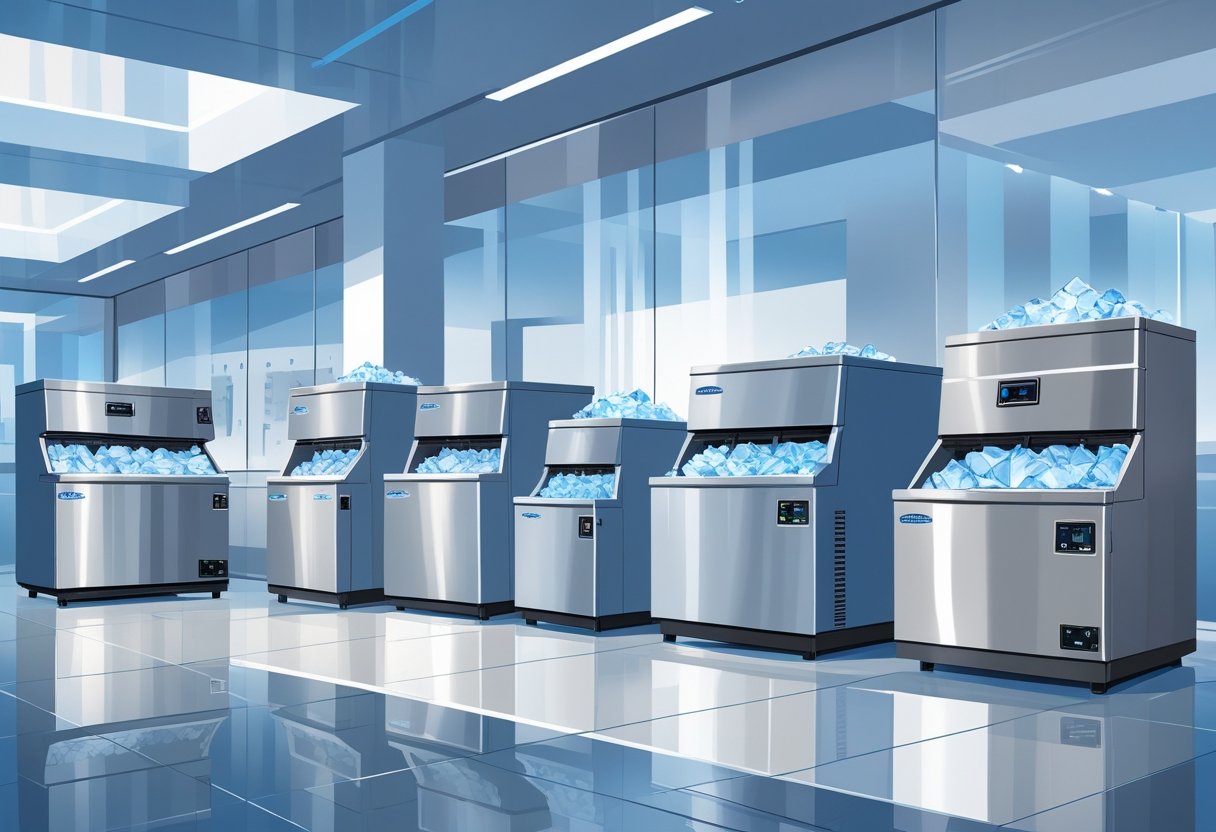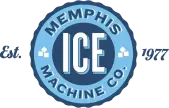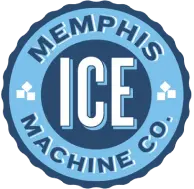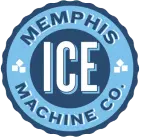proudly serving
the mid-south
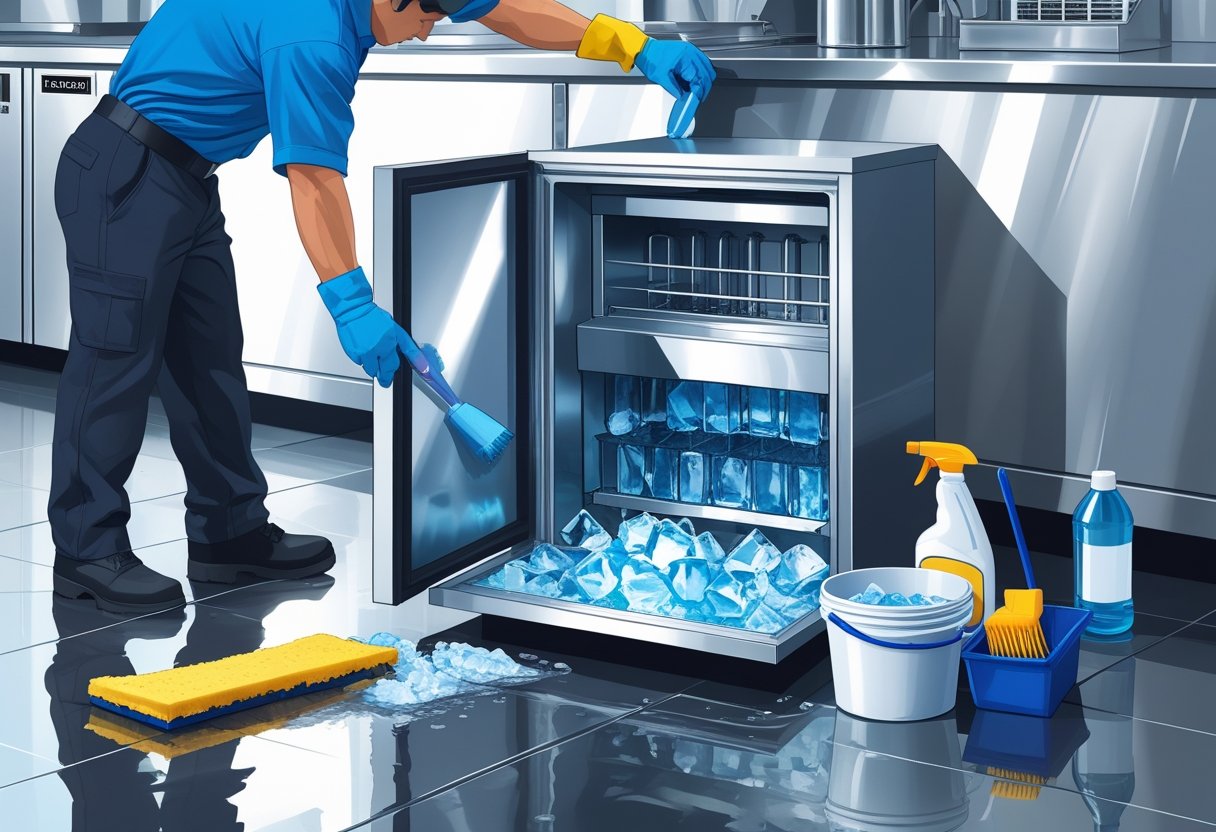
How to Clean a Commercial Ice Machine: Step-by-Step Maintenance Guide
Keeping your commercial ice machine clean is essential to ensure it runs efficiently and produces safe, high-quality ice. Regular cleaning prevents buildup that can affect ice taste, machine performance, and even lead to costly repairs. This straightforward process helps you maintain hygiene standards and protect your customers.
At Memphis Ice, we understand that your ice machine is a critical part of your daily operations, whether in a restaurant, hospital, or retail setting. You don’t have time to worry about equipment downtime or unexpected maintenance issues. With a proper cleaning routine, you can avoid these problems and keep your business running smoothly.
Knowing the right steps and products to use can save you time and stress. This guide will walk you through the key actions to take for thorough cleaning and upkeep, so your commercial ice machine stays reliable year-round. If you need expert help, Memphis Ice is here to support you with trusted service across the Mid-South.
Understanding Your Commercial Ice Machine
Knowing how your commercial ice machine works and its main parts helps you maintain it properly. Different types of ice makers produce ice in specific ways. Also, understanding which components need regular cleaning prevents breakdowns and ensures safe ice.
Types of Commercial Ice Makers
Commercial ice machines come in various types, each suited for different business needs. The most common are:
- Cube Ice Makers: Produce traditional cube-shaped ice, ideal for restaurants and bars.
- Flake Ice Makers: Create soft, thin ice flakes often used in seafood displays or healthcare.
- Nugget Ice Makers: Generate chewable, small pieces, popular in beverage service.
- Tube Ice Makers: Make hollow cylindrical ice, used in large-scale food processing or cooling.
Each type has a slightly different design but requires regular cleaning to prevent mineral buildup and bacteria growth. Your choice depends on the ice quality and volume your business demands.
How Ice Production Works
A commercial ice maker works by freezing water on a cooled surface and then harvesting the ice once it reaches the right thickness or shape. Water circulates through evaporator plates or drums cooled by a refrigeration system using a compressor and refrigerant.
Ice forms on these chilled surfaces and is then released into a storage bin by heating the surface slightly or using a mechanical method. The process repeats continuously to meet your business’s ice demand. Proper water filtration before the machine reduces scale formation and prolongs machine life.
Key Components That Require Cleaning
Keeping several parts clean is critical for efficient operation and ice safety:
- Water Reservoir: Where water collects before freezing; mineral deposits here reduce ice quality.
- Evaporator Plates or Drums: Critical freezing surfaces that need descaling and sanitizing.
- Ice Storage Bin: A common place for mold and bacteria buildup if not cleaned regularly.
- Water Filters: Require frequent replacing to avoid clogging and contamination.
- Drain Lines and Pumps: Must be clear to prevent water backups and odors.
Memphis Ice technicians emphasize regular maintenance of these parts. Cleaning them not only improves ice taste and safety but also prevents costly repairs and downtime during busy periods.
For a step-by-step cleaning guide tailored to your commercial ice machine, visit this detailed cleaning resource.
Signs Your Ice Machine Needs Cleaning
Keeping your commercial ice machine clean is essential to maintaining ice quality and machine efficiency. If you notice changes in ice appearance, slower production, or visible buildup, it’s time to take action. Ignoring these signs can lead to equipment damage and health risks.
Declining Ice Quality
If your ice starts tasting strange, smells musty, or looks cloudy instead of clear, these are clear signals that your machine needs cleaning. Contaminants and bacteria can affect the taste and safety of the ice.
Dirty machines also increase the likelihood of biofilm buildup, which traps bacteria and impacts ice safety. Poor ice quality can negatively affect drinks, food presentation, and customer trust.
Regular cleaning prevents these problems, ensuring that your ice remains fresh and safe for your customers.
Reduced Ice Production
When your ice machine produces less ice than usual or stops abruptly, it’s often due to mineral buildup or clogged water lines. Scale deposits reduce water flow and strain machine components.
You might notice longer cycle times or uneven ice formation. If left unchecked, these issues could cause expensive mechanical failures and downtime.
Timely cleaning improves efficiency, reduces energy costs, and extends the life of your machine.
Visible Mineral Buildup or Mold
Mineral deposits often appear as white or yellowish crusts around the ice maker, water reservoir, or dispenser areas. You might also find slimy mold or mildew in hard-to-see spots.
This buildup harms machine performance and risks contaminating your ice. Regular inspection helps identify these problems early.
Cleaning removes scale and prevents mold growth, protecting your equipment and maintaining sanitation standards required for your business.
For reliable cleaning and maintenance in the Mid-South, Memphis Ice can support your commercial ice machine needs with expert care and service plans. Talk to an expert today to keep your ice clean and your business running smoothly.
Preparing for the Cleaning Process
Before starting your commercial ice machine cleaning, it’s important to have everything ready to ensure a smooth and effective process. This includes assembling the right tools, taking safety precautions, and consulting your machine’s instructions.
Gathering Cleaning Tools and Solutions
You’ll need a selection of supplies specifically made for ice machines. Always choose a nickel-safe ice machine cleaner to protect the metal components while removing mineral deposits and buildup effectively.
Prepare these items before starting:
- Soft cloths or brushes
- Food-safe sanitizer
- Bucket or container for cleaning solution
- Gloves and eye protection
- Manufacturer-recommended cleaning agents
Using proper cleaning solutions designed for commercial ice machines keeps your unit running efficiently and helps prevent bacterial growth. Memphis Ice recommends premium nickel-safe cleaners for lasting protection during routine ice machine cleaning.
Ensuring Safety Before Cleaning
Safety is critical when working on your ice machine. Begin by turning off and unplugging the machine to avoid electrical hazards. Removing all ice from the bin is necessary; dispose of existing ice to prevent contamination.
Allow the ice bin to thaw if ice is stuck together, which makes cleaning easier and prevents damage to the machine. Wear gloves and eye protection to guard against chemical exposure from cleaners and sanitizers.
Following strict safety steps protects both you and your equipment during maintenance, reducing risk and ensuring thorough cleaning.
Reading the Manufacturer’s Guidelines
Every commercial ice machine is unique. Before you begin, review your unit’s manual carefully for specific cleaning instructions and recommended products.
Some machines may have automated cleaning cycles, special cleaning ports, or restrictions on certain chemicals. Following these guidelines helps maintain your warranty and prevents damage.
If you’re unsure, Memphis Ice’s experts can assist with manufacturer details tailored to your machine model, ensuring you clean safely and effectively for long-term performance.
For more detailed advice on preparing and cleaning your commercial ice machine, visit the comprehensive step-by-step cleaning guide.
Step-by-Step Cleaning Instructions
Cleaning a commercial ice machine involves careful attention to several key areas to ensure hygiene and efficiency. Each step focuses on specific parts of the machine, using the right tools and cleaners, including nickel-safe ice machine cleaner when applicable.
Powering Down and Removing Ice
Before you begin cleaning, turn off the ice machine completely to ensure safety. Unplug the unit and wait for any ice in the storage bin to melt or remove it manually. This prevents water damage and allows you to access internal components easily.
Drain any remaining water from the reservoir or water lines according to your machine’s manual. This helps avoid leftover moisture during cleaning. Removing all ice and water also ensures your cleaning solution can reach all surfaces, improving sanitation.
Cleaning Internal Components
Start with a nickel-safe ice machine cleaner mixed according to the label instructions. Apply the solution to the evaporator plates, water distribution system, and other contact surfaces. Use a soft brush or cloth to scrub away scale, mineral deposits, and biofilm buildup without damaging the machine.
Be sure to follow the cleaning solution’s recommended soak time to dissolve contaminants. Avoid harsh chemicals that can harm the internal parts or leave residues affecting ice quality. Rinse thoroughly with clean water to remove all cleaner traces before reassembling.
Sanitizing Removable Parts
Remove shelves, ice makers, and water filters that are designed to be detached. Soak these parts in a sanitizing solution approved for food contact surfaces. Scrub gently, rinse with potable water, and allow them to air dry before reinstalling.
Routine sanitizing prevents mold and bacterial growth that can affect ice safety. If you notice damage or excessive wear on any removable parts, replace them to maintain optimal hygiene. Regular inspection during cleaning sessions keeps your commercial ice machine reliable.
Cleaning the Exterior Surfaces
Use a mild detergent or a nickel-safe cleaning product to wipe down the machine’s exterior, including control panels and handles. Clean surfaces regularly to remove dirt, grease, and fingerprints that can harbor germs.
A clean exterior improves your business’s image and prevents contaminants from entering the machine. Pay special attention to vents and fans to avoid blockages that reduce cooling efficiency. Always dry all surfaces thoroughly before powering the machine back on.
For professional support in maintaining a clean ice machine, Memphis Ice offers expert service tailored to your business needs. Keeping your commercial ice machine spotless supports efficiency and health standards. Learn more about the proper ice machine cleaning techniques at this detailed step-by-step guide.
Maintaining Optimum Performance After Cleaning
Proper upkeep after cleaning helps your ice machine stay efficient and reliable. Key factors include managing water quality, avoiding mineral buildup, and sticking to a consistent maintenance routine. These actions ensure steady ice production and extend your machine’s lifespan.
Replacing Water Filters
Water filters play a critical role in ice quality and machine health. Over time, filters get clogged with sediment and impurities, reducing water flow and making your ice machine work harder. This can lower ice output and affect the taste and safety of your ice.
Change filters according to manufacturer recommendations, often every 3 to 6 months. If your water supply has high mineral content or sediment, consider replacing filters more frequently. Always use filters compatible with your specific ice machine model to avoid damage.
Proper filter maintenance prevents contaminants that cause breakdowns. Memphis Ice recommends checking filters regularly as part of routine service to keep your ice production consistent and your ice clear and clean.
Preventing Mineral Buildup
Mineral deposits from hard water, such as calcium and magnesium, can accumulate inside your ice machine’s components. This buildup restricts water flow, clogs pipes, and lowers ice production. It can also cause parts to wear out prematurely.
Use descaling solutions approved for commercial ice machines during cleaning. Follow manufacturer guidelines closely to remove scale effectively without damaging your equipment. Installing a water softener can reduce mineral deposits and simplify maintenance.
Visually inspect areas prone to buildup frequently. Signs include white residue, slower ice making, or unusual noises. Addressing mineral buildup early protects your machine’s efficiency and avoids costly repairs.
Setting Up a Cleaning Schedule
A consistent cleaning schedule is essential to maintain hygiene and optimal performance. Depending on your ice machine’s usage and environment, cleaning intervals typically range from monthly to quarterly.
Include tasks like sanitizing the water reservoir, scrubbing surfaces, replacing filters, and inspecting for scale. Keeping a written schedule ensures no step is missed and helps track maintenance history.
In busy operations, consider partnering with a trusted provider like Memphis Ice to manage your cleaning routine. Regular maintenance limits downtime and keeps your ice safe for customers and staff alike.
Frequently Asked Questions
Proper care involves removing buildup from filters, following a cleaning schedule, using effective sanitizing agents, and addressing mold issues promptly. Routine maintenance helps your commercial ice machine perform well and extend its lifespan with minimal downtime.
What steps are involved in cleaning the filter of a commercial ice machine?
First, turn off and unplug the ice machine before removing the filter. Rinse the filter under warm water to remove loose debris.
If necessary, soak it in a mild detergent solution, then scrub gently with a soft brush. Rinse thoroughly and let it dry completely before reinstalling.
What is the recommended frequency for cleaning a commercial ice machine?
Cleaning should occur at least every 1 to 3 months depending on usage and water quality. High-use environments or hard water areas may require more frequent cleaning.
Regular cleaning prevents biofilm buildup, reduces odors, and ensures ice quality stays high. You can follow a schedule recommended by the manufacturer or consult with Memphis Ice for tailored maintenance plans.
Which cleaning agents or solutions are best suited for sanitizing a commercial ice machine?
Use ice machine-specific cleaning solutions designed to remove scale, mineral deposits, and biofilms safely. Avoid general household cleaners as they may leave harmful residues.
Always follow the manufacturer’s instructions when mixing and applying cleaners. Commercial ice machine cleaning kits often include a sanitizing step to ensure hygiene.
How can mold be effectively removed from a commercial ice maker?
Mold should be removed promptly by cleaning affected areas with a sanitizing solution. Use a brush to reach crevices and hard-to-access parts.
After cleaning, rinse all surfaces thoroughly with clean water. Regular maintenance reduces the risk of mold growth, which can contaminate ice and damage your equipment.
Can vinegar be used to clean a commercial ice machine, and if so, how?
Yes, a vinegar and water solution can help dissolve mineral buildup on some parts. Mix one part white vinegar with one part water.
Apply the solution carefully to removable parts or areas with deposits, then rinse thoroughly. Vinegar is a natural option but should be used with caution and never as the sole cleaning agent.
What maintenance practices should be followed to ensure the longevity of a commercial ice machine?
Regularly check water filters, clean condenser coils, and sanitize the ice machine as recommended. Inspect hoses and connections for leaks or damage.
Schedule professional servicing annually or biannually to catch issues early. Proper maintenance keeps your machine running reliably, which Memphis Ice has supported businesses with since 1977.
Recent News
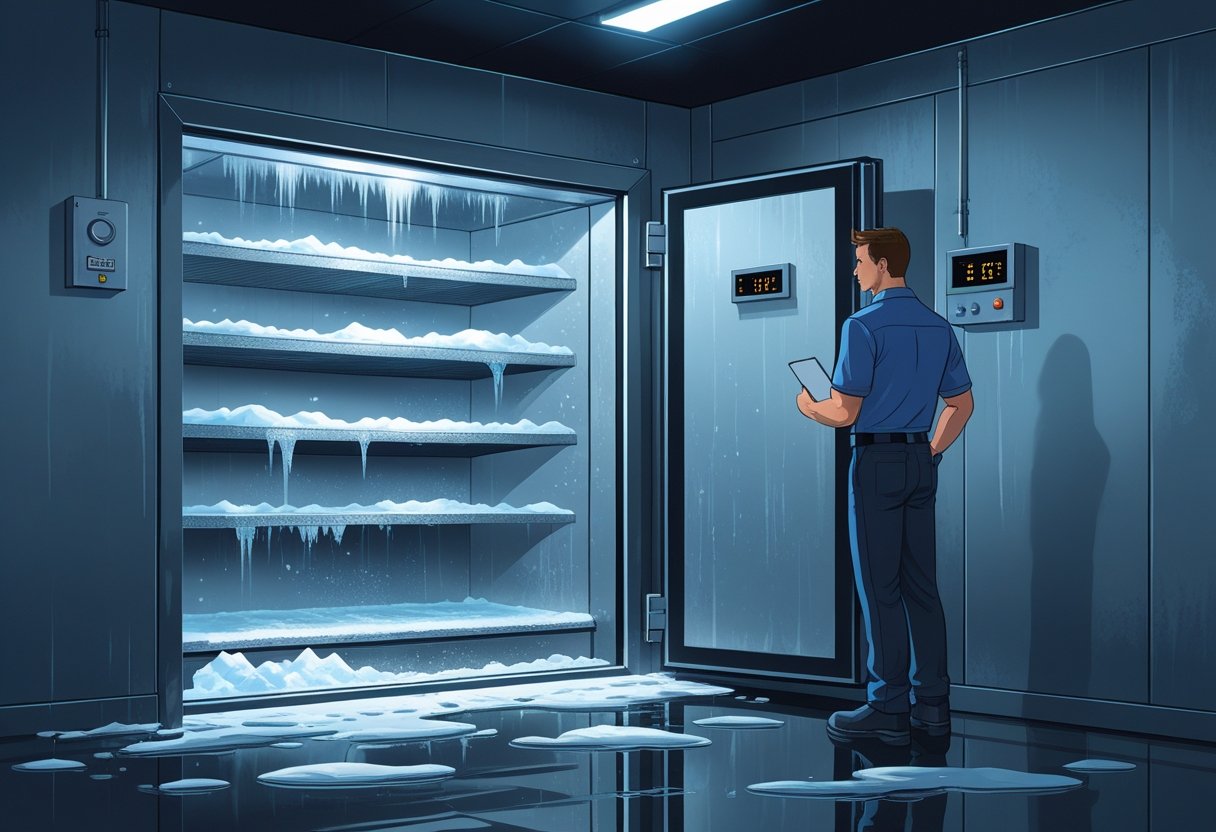
Walk-in Freezer Not Cooling Causes and Effective Troubleshooting Tips
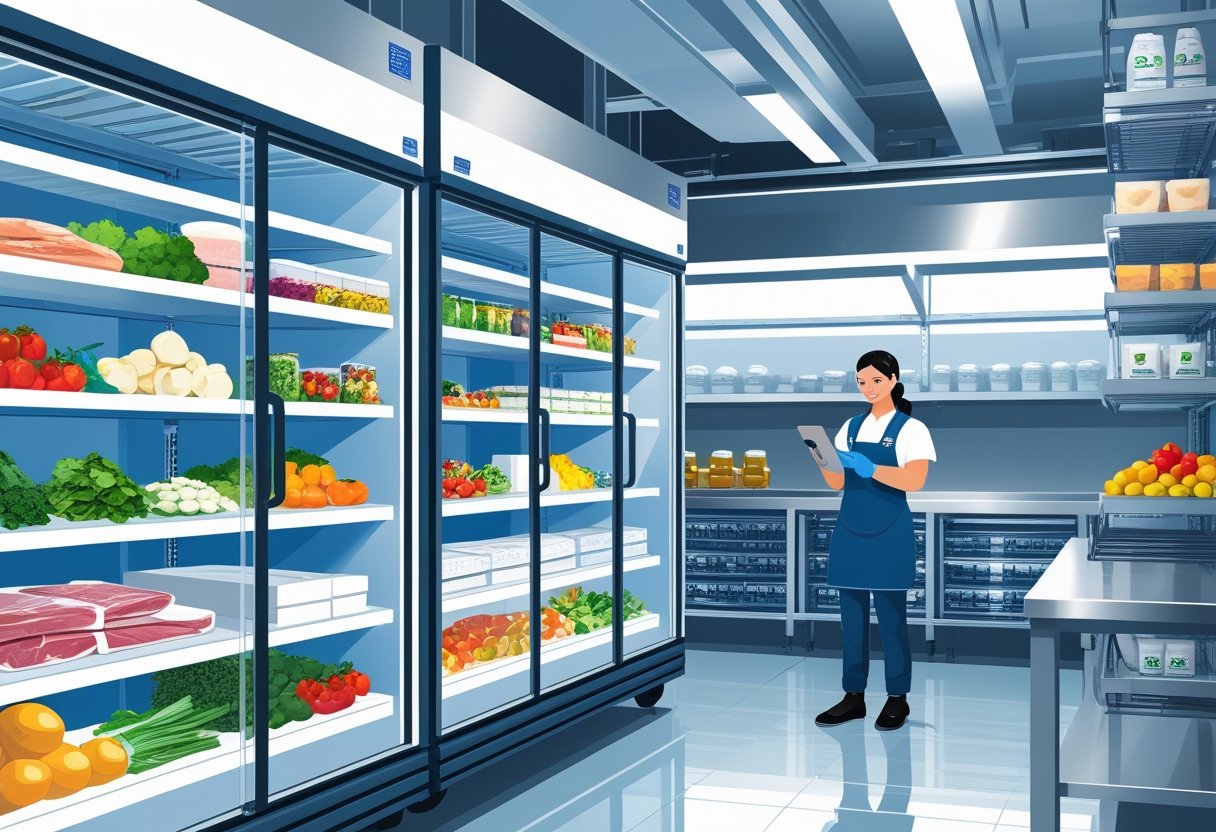
Cold Storage Solutions for Food Service Enhancing Efficiency and Safety in Kitchens
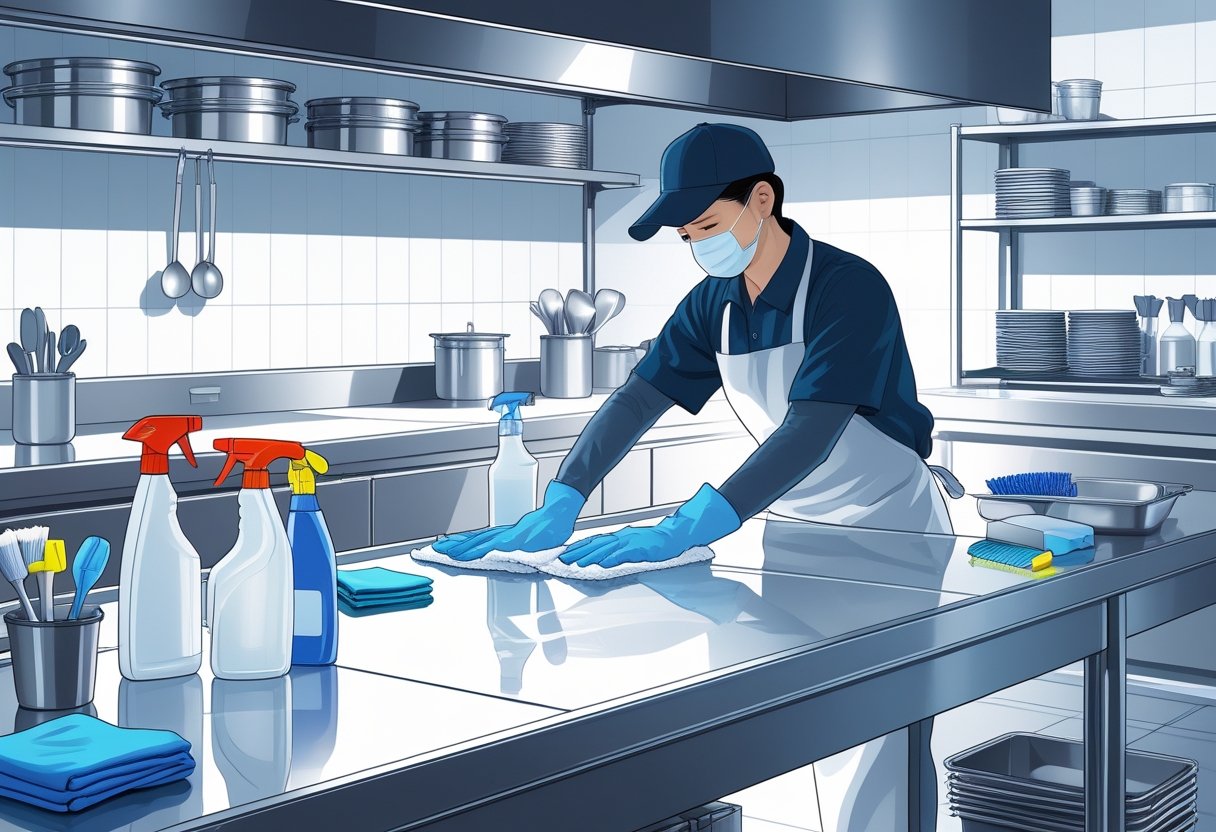
Commercial Prep Table Maintenance Tips for Enhanced Durability and Efficiency
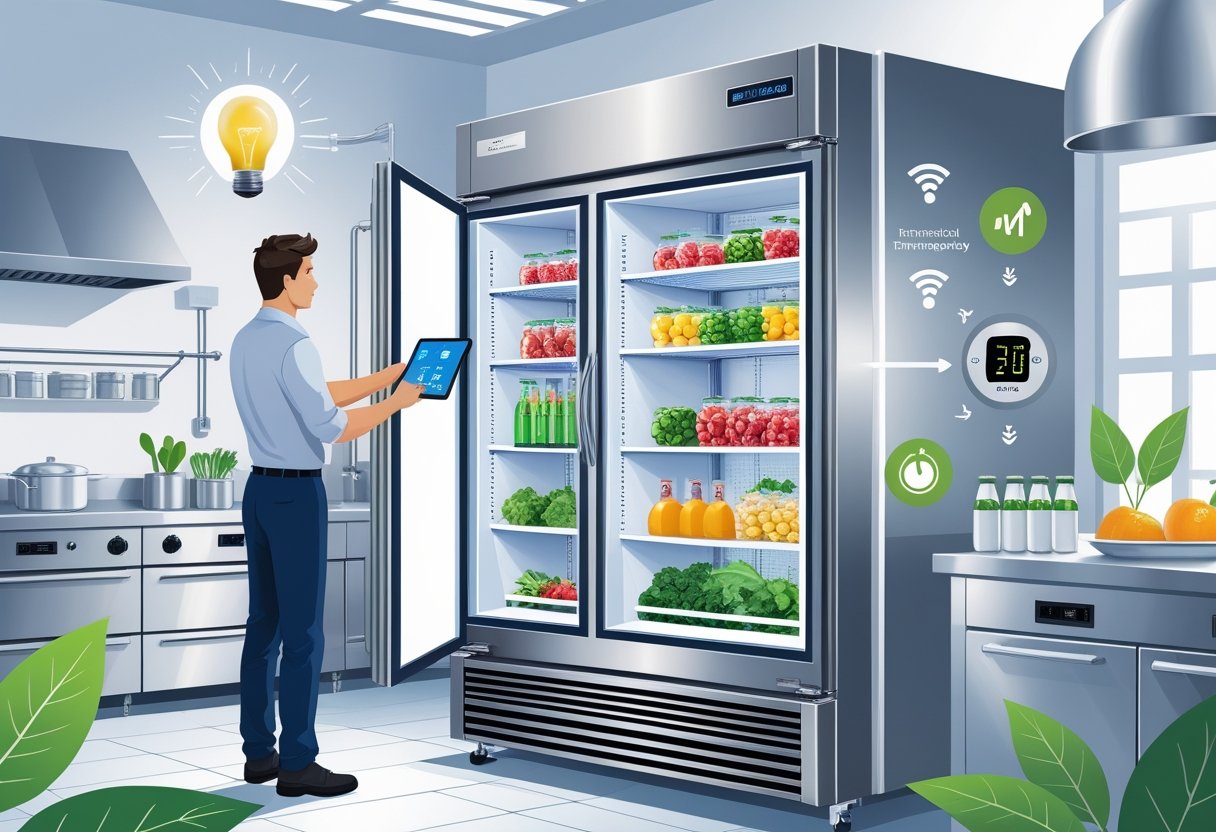
Commercial Refrigerator Energy Efficiency Tips for Reducing Costs and Extending Equipment Life
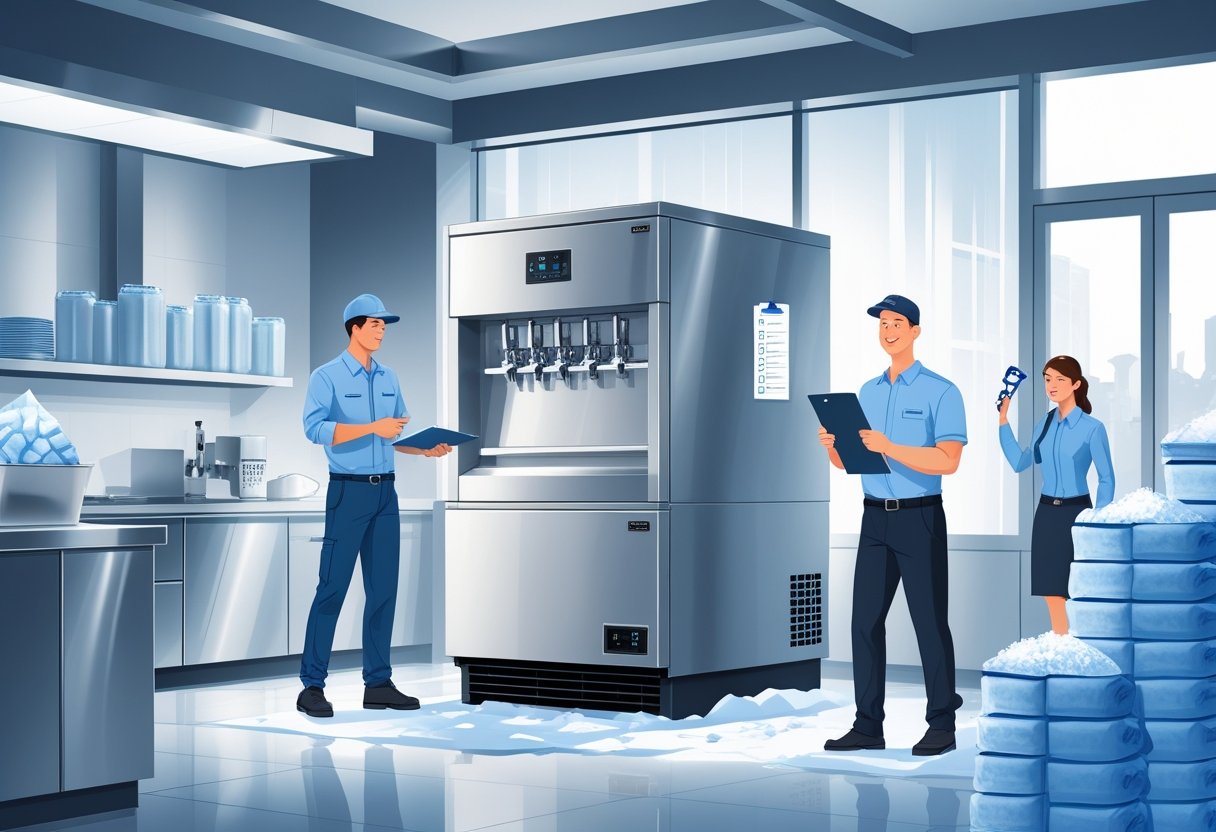
Benefits of Full-Service Ice Machine Rental for Efficient and Hassle-Free Operations
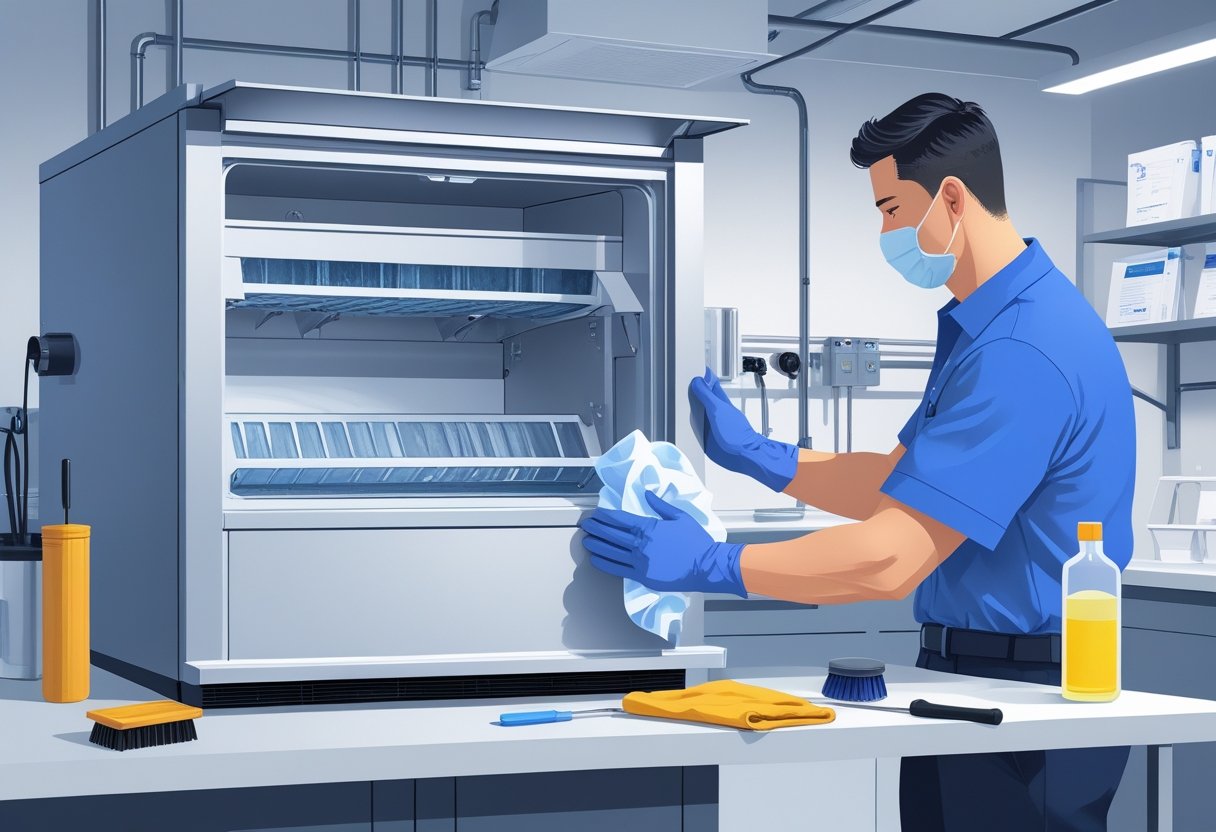
How to Extend Life of Your Ice Machine with Simple Maintenance Tips
